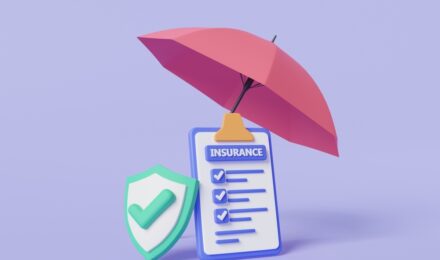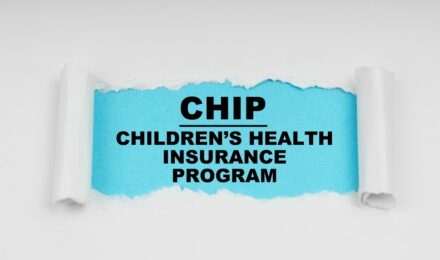Contents
- 1 Why Energy Costs Spike in Winter
- 2 The Role of LIHEAP
- 3 State and Local Energy Assistance Programs
- 4 Utility Company Programs
- 5 Protections Against Shut-Offs
- 6 Documentation Families Should Prepare
- 7 How Weatherization Programs Help
- 8 Special Support for Renters
- 9 The Importance of Acting Early
- 10 Where to Find Help
- 11 Conclusion
- 12 References
As the temperatures drop, many households face rising utility bills. Heating costs strain budgets, especially for low-income families. Without help, some risk falling behind on rent or choosing between food and heat. Programs like LIHEAP and state energy aid exist to prevent these hardships. Families that act early are more likely to receive timely support.
Why Energy Costs Spike in Winter
Cold months bring higher energy use for heating and lighting. In colder regions, heating bills can double compared to fall. Energy Information Administration projections show heating fuel costs remain high in 2025 (EIA, 2025). Renters and homeowners often lack insulation or efficient systems, which drives costs even higher.
Rising energy costs do more than impact comfort. They contribute to housing instability when families can’t afford bills. Missed payments may trigger utility shut-offs. In some states, landlords may move toward eviction if utilities are disconnected. Understanding available programs can prevent these outcomes.
The Role of LIHEAP
The Low Income Home Energy Assistance Program (LIHEAP) is the primary federal program for heating relief. It offers grants to help households pay heating and utility bills. LIHEAP also provides funds for weatherization and minor energy-related home repairs.
States and local agencies manage LIHEAP. This means application procedures and deadlines differ. Many states open applications in October, and funds are limited. Acting quickly is essential. Eligibility usually depends on household income and family size. Priority often goes to seniors, people with disabilities, and families with young children.
Benefits vary but typically cover a portion of winter bills. In some cases, payments go directly to utility companies. Households may reapply annually, but approval is not guaranteed.
State and Local Energy Assistance Programs
Beyond LIHEAP, many states run their own programs. These may supplement federal funds or provide unique relief. For example, some states cap utility rates for low-income households. Others offer one-time grants for arrears or deposit assistance when reconnecting service.
Local governments and nonprofit organizations also step in. Community action agencies often administer both LIHEAP and local funds. Charities, churches, and regional nonprofits provide additional resources like fuel deliveries, space heaters, or utility vouchers. These supports are usually limited, so families should apply early.
Utility Company Programs
Utility companies themselves often provide aid. Many run “budget billing” plans to spread annual costs evenly. This avoids sharp spikes in winter months. Others operate hardship programs funded by customer donations or corporate contributions.
Companies may also offer payment arrangements. Instead of one large bill, customers can make smaller installments. Some utilities provide discounts for households receiving SNAP, SSI, or Medicaid. Customers should contact their providers before missing payments. Early communication helps prevent shut-off notices.
Protections Against Shut-Offs
Most states enforce shut-off protections during winter. These laws prevent disconnections when temperatures fall below certain thresholds. Protections often apply automatically for households with vulnerable members, like children or seniors.
However, protections are not permanent. Families may still owe full balances once the protection period ends. Some states require formal enrollment in hardship programs to qualify. Understanding local rules is critical. Families should call utility regulators or public utility commissions for guidance.
Documentation Families Should Prepare
Successful applications require complete and accurate paperwork. Families should gather the following before applying:
- Proof of income for all household members.
- Copies of recent utility bills.
- Identification for the applicant and dependents.
- Lease agreements or proof of residence.
Incomplete applications often cause delays or denials. Submitting documents early ensures faster processing. Keeping copies of everything submitted is also wise.
How Weatherization Programs Help
Heating bills are often high due to poor insulation or inefficient systems. Weatherization programs address these root causes. The Weatherization Assistance Program (WAP), funded by the U.S. Department of Energy, improves home efficiency. It provides insulation, furnace repairs, and energy-efficient upgrades at no cost to eligible families.
These upgrades reduce long-term energy costs and improve safety. While waitlists can be long, applying in fall increases chances of timely service. Combining weatherization with LIHEAP creates both short-term and lasting relief.
Special Support for Renters
Renters often face unique challenges. They may not control heating systems or insulation. Many landlords pass utility costs directly to tenants. Fortunately, LIHEAP and many state programs cover renters as long as they pay energy bills.
Customers that want to rent should still notify landlords when applying. Some landlords must verify tenancy or provide copies of utility agreements. In multi-unit buildings, utility assistance may be coordinated through property managers. Renters should not assume they are excluded from programs.
The Importance of Acting Early
Delays in applying can be costly. Funds are limited, and winter demand is high. Applications submitted in October are more likely to be approved before bills peak. Families who wait may face gaps in coverage or extended processing times.
Acting early also prevents crises. Once a shut-off notice arrives, families may have fewer options. Some programs require proof of imminent disconnection, but this is not universal. Being proactive ensures greater flexibility and reduces stress.
Where to Find Help
Several reliable resources guide families through energy assistance:
- U.S. Department of Health and Human Services (HHS): Provides information on LIHEAP and links to state offices (HHS, 2025).
- Energy.gov: Offers details about the Weatherization Assistance Program and energy efficiency tips (DOE, 2025).
- National Energy Assistance Referral (NEAR) Hotline: Operated by HHS, it connects callers to local assistance offices. Families can call 1-866-674-6327 for help.
These sources ensure families access accurate, up-to-date program information.
Conclusion
Winter should not be a season of choosing between heat and other essentials. Energy assistance programs exist to protect vulnerable families from hardship. LIHEAP, state and local aid, utility protections, and weatherization programs all provide relief. But timing matters. Applications open in October, and funds are not unlimited.
Families that prepare documents early, contact utilities in advance, and apply as soon as possible will be better positioned. By acting before winter arrives, households can keep the heat on, protect their health, and avoid housing instability. Assistance is available—but only to those who seek it before the cold sets in.
References
1. Low Income Home Energy Assistance Program (LIHEAP). (U.S. Department of Health and Human Services)
2. Weatherization Assistance Program (WAP). (U.S. Department of Energy)
3. Winter Fuels Outlook, 2025. (U.S. Energy Information Administration)
Contents
- 1 Why Energy Costs Spike in Winter
- 2 The Role of LIHEAP
- 3 State and Local Energy Assistance Programs
- 4 Utility Company Programs
- 5 Protections Against Shut-Offs
- 6 Documentation Families Should Prepare
- 7 How Weatherization Programs Help
- 8 Special Support for Renters
- 9 The Importance of Acting Early
- 10 Where to Find Help
- 11 Conclusion
- 12 References
As the temperatures drop, many households face rising utility bills. Heating costs strain budgets, especially for low-income families. Without help, some risk falling behind on rent or choosing between food and heat. Programs like LIHEAP and state energy aid exist to prevent these hardships. Families that act early are more likely to receive timely support.
Why Energy Costs Spike in Winter
Cold months bring higher energy use for heating and lighting. In colder regions, heating bills can double compared to fall. Energy Information Administration projections show heating fuel costs remain high in 2025 (EIA, 2025). Renters and homeowners often lack insulation or efficient systems, which drives costs even higher.
Rising energy costs do more than impact comfort. They contribute to housing instability when families can’t afford bills. Missed payments may trigger utility shut-offs. In some states, landlords may move toward eviction if utilities are disconnected. Understanding available programs can prevent these outcomes.
The Role of LIHEAP
The Low Income Home Energy Assistance Program (LIHEAP) is the primary federal program for heating relief. It offers grants to help households pay heating and utility bills. LIHEAP also provides funds for weatherization and minor energy-related home repairs.
States and local agencies manage LIHEAP. This means application procedures and deadlines differ. Many states open applications in October, and funds are limited. Acting quickly is essential. Eligibility usually depends on household income and family size. Priority often goes to seniors, people with disabilities, and families with young children.
Benefits vary but typically cover a portion of winter bills. In some cases, payments go directly to utility companies. Households may reapply annually, but approval is not guaranteed.
State and Local Energy Assistance Programs
Beyond LIHEAP, many states run their own programs. These may supplement federal funds or provide unique relief. For example, some states cap utility rates for low-income households. Others offer one-time grants for arrears or deposit assistance when reconnecting service.
Local governments and nonprofit organizations also step in. Community action agencies often administer both LIHEAP and local funds. Charities, churches, and regional nonprofits provide additional resources like fuel deliveries, space heaters, or utility vouchers. These supports are usually limited, so families should apply early.
Utility Company Programs
Utility companies themselves often provide aid. Many run “budget billing” plans to spread annual costs evenly. This avoids sharp spikes in winter months. Others operate hardship programs funded by customer donations or corporate contributions.
Companies may also offer payment arrangements. Instead of one large bill, customers can make smaller installments. Some utilities provide discounts for households receiving SNAP, SSI, or Medicaid. Customers should contact their providers before missing payments. Early communication helps prevent shut-off notices.
Protections Against Shut-Offs
Most states enforce shut-off protections during winter. These laws prevent disconnections when temperatures fall below certain thresholds. Protections often apply automatically for households with vulnerable members, like children or seniors.
However, protections are not permanent. Families may still owe full balances once the protection period ends. Some states require formal enrollment in hardship programs to qualify. Understanding local rules is critical. Families should call utility regulators or public utility commissions for guidance.
Documentation Families Should Prepare
Successful applications require complete and accurate paperwork. Families should gather the following before applying:
- Proof of income for all household members.
- Copies of recent utility bills.
- Identification for the applicant and dependents.
- Lease agreements or proof of residence.
Incomplete applications often cause delays or denials. Submitting documents early ensures faster processing. Keeping copies of everything submitted is also wise.
How Weatherization Programs Help
Heating bills are often high due to poor insulation or inefficient systems. Weatherization programs address these root causes. The Weatherization Assistance Program (WAP), funded by the U.S. Department of Energy, improves home efficiency. It provides insulation, furnace repairs, and energy-efficient upgrades at no cost to eligible families.
These upgrades reduce long-term energy costs and improve safety. While waitlists can be long, applying in fall increases chances of timely service. Combining weatherization with LIHEAP creates both short-term and lasting relief.
Special Support for Renters
Renters often face unique challenges. They may not control heating systems or insulation. Many landlords pass utility costs directly to tenants. Fortunately, LIHEAP and many state programs cover renters as long as they pay energy bills.
Customers that want to rent should still notify landlords when applying. Some landlords must verify tenancy or provide copies of utility agreements. In multi-unit buildings, utility assistance may be coordinated through property managers. Renters should not assume they are excluded from programs.
The Importance of Acting Early
Delays in applying can be costly. Funds are limited, and winter demand is high. Applications submitted in October are more likely to be approved before bills peak. Families who wait may face gaps in coverage or extended processing times.
Acting early also prevents crises. Once a shut-off notice arrives, families may have fewer options. Some programs require proof of imminent disconnection, but this is not universal. Being proactive ensures greater flexibility and reduces stress.
Where to Find Help
Several reliable resources guide families through energy assistance:
- U.S. Department of Health and Human Services (HHS): Provides information on LIHEAP and links to state offices (HHS, 2025).
- Energy.gov: Offers details about the Weatherization Assistance Program and energy efficiency tips (DOE, 2025).
- National Energy Assistance Referral (NEAR) Hotline: Operated by HHS, it connects callers to local assistance offices. Families can call 1-866-674-6327 for help.
These sources ensure families access accurate, up-to-date program information.
Conclusion
Winter should not be a season of choosing between heat and other essentials. Energy assistance programs exist to protect vulnerable families from hardship. LIHEAP, state and local aid, utility protections, and weatherization programs all provide relief. But timing matters. Applications open in October, and funds are not unlimited.
Families that prepare documents early, contact utilities in advance, and apply as soon as possible will be better positioned. By acting before winter arrives, households can keep the heat on, protect their health, and avoid housing instability. Assistance is available—but only to those who seek it before the cold sets in.
References
1. Low Income Home Energy Assistance Program (LIHEAP). (U.S. Department of Health and Human Services)
2. Weatherization Assistance Program (WAP). (U.S. Department of Energy)
3. Winter Fuels Outlook, 2025. (U.S. Energy Information Administration)






